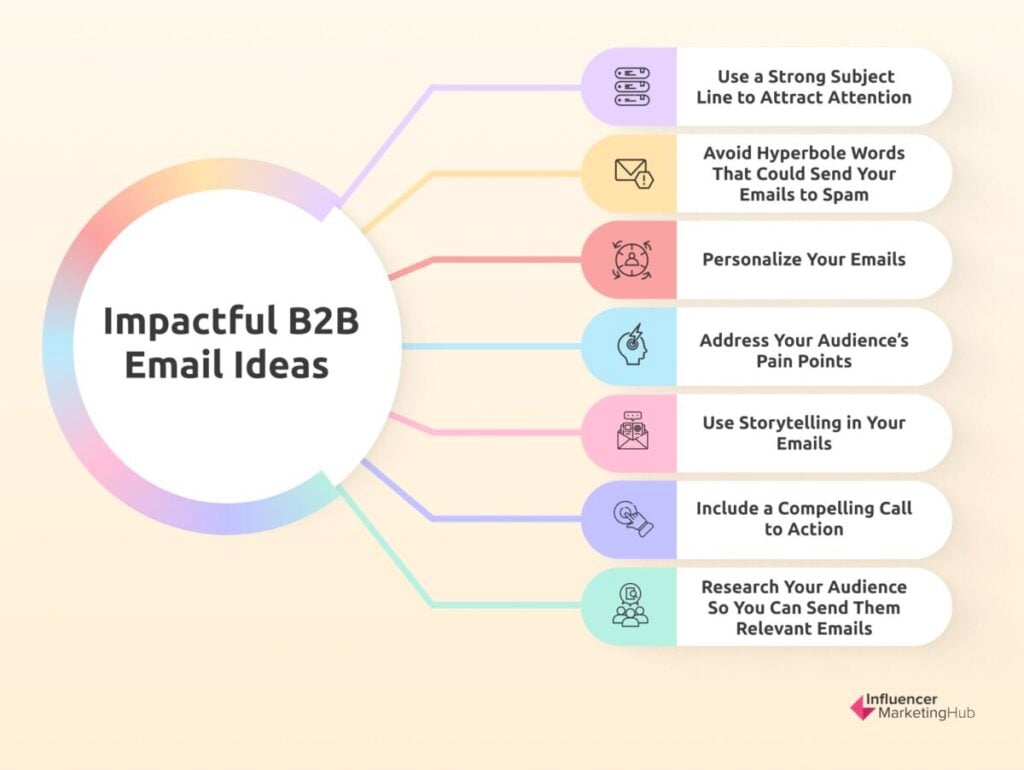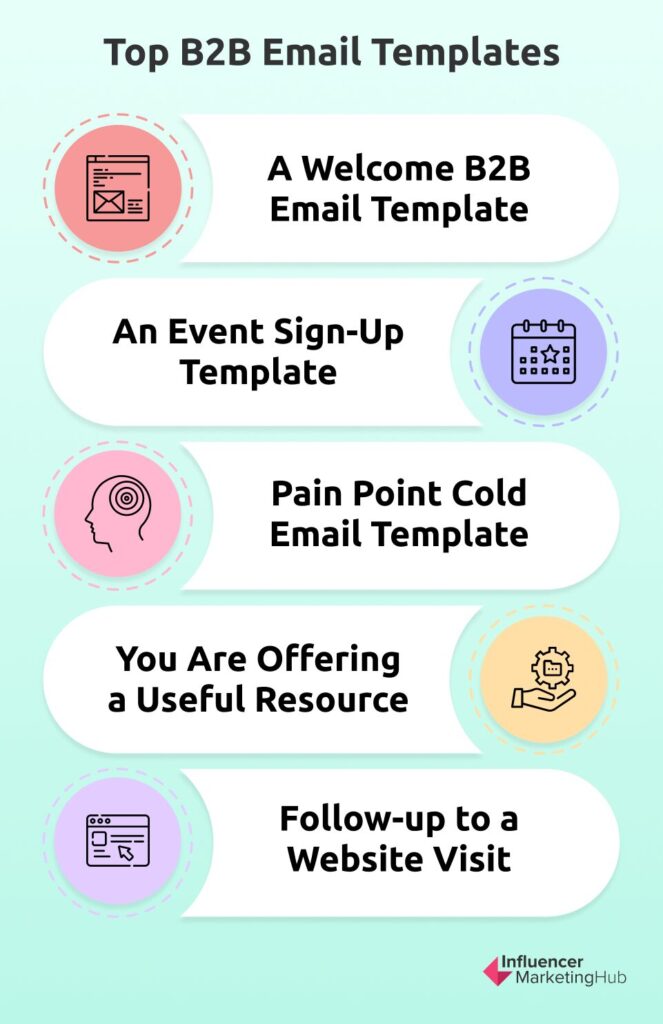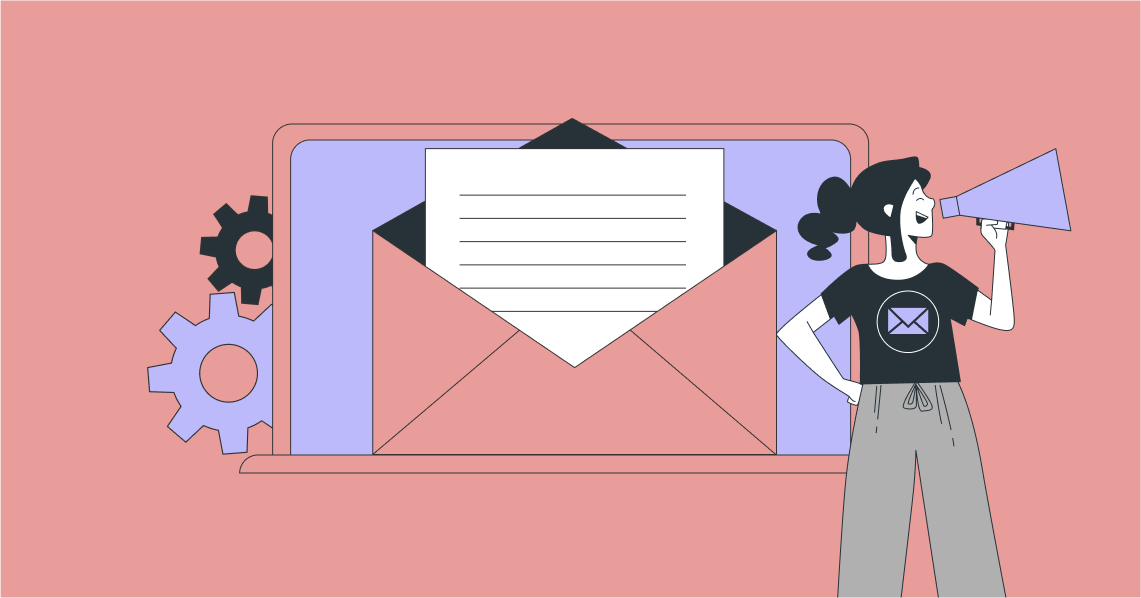Email is still a preferred form of communication for businesses. It’s fast and cheap, and you keep a permanent record of your communication. Using email can increase your efficiency and productivity. It has more permanence than text messaging or using the telephone and leads to much quicker communication than relying on the traditional (snail) mail network. Your message will be stored until the recipient is ready to read it, and you can easily send the same message to multiple people. It should be no surprise, therefore, that email is a popular means of communication with organizations operating in the Business-to-Business (B2B) sector.
However, using email isn’t necessarily the perfect means of communication for a business. Emails tend to be less formal than letters, and sometimes this leads to careless statements that can cause confusion. They can be particularly dangerous when you send emails by mistake to the wrong recipient.
Also, people and businesses send far too many emails each day. An estimated 347.3 billion emails are sent daily around the globe. On average, a person receives about 121 emails per day, many of which they never even look at. In 2023, a staggering 45.6% of emails were reported to be spam, and that was down considerably from 80.26% in 2011. Therefore, you need to work hard to ensure that your emails stand out amongst this morass of unsolicited rubbish and that you write your emails in such a way that a high percentage of your recipients read them. Following the tips in this Ultimate Guide to Effective B2B Email Writing ensures that your emails stand out and don’t end up languishing in people’s Unread Emails folder, or worse be whisked automatically to their Spam folder, never to be seen.
The Ultimate Guide to Effective B2B Email Writing:
The Difference Between B2B and B2C Emails
The main difference in the emails that B2B vendors write, compared to those operating in the B2C marketplace, is the focus of the intended recipients. In B2C emails you write about the interests, needs, and challenges (pain points) of the person receiving the email. With B2B email marketing, however, your intended customer is a business, so you should focus on the business’s interests, needs, and pain points.
Although a person (or often a group of people) makes the purchasing decision in a company, they do so to improve the well-being of the business – not their personal well-being. So, you need to write all your B2B emails recognizing that difference in perspective.
Typical differences in the motivation and behavior of B2B email recipients, compared to those receiving personal emails, include:
- B2B recipients look for financial incentives and logical arguments, whereas B2C recipients are driven by emotion.
- B2B senders need to educate their recipients, stressing how their products can meet the recipients’ pain points, whereas B2C emails trigger emotional responses.
- B2B recipients carefully weigh up the claims made in emails they receive, weighing up the claimed benefits. B2C recipients tend to act on emotion, sometimes without much analysis or thought.
Key Elements of Successful B2B Emails
Although there is a wide range of B2B emails you can send, there are a few elements that will occur in all your emails.
- A subject line – needs to be compelling and stand out from the crowd, without being sensational and likely to underdeliver.
- Opening – the first paragraph of your email. It needs to be engaging and indicate what the rest of the email will be about.
- The body – the bulk of your email. This is where you deliver your intended message. Keep it short (nobody has time to read multi-page emails nowadays), yet it needs to include all the essential information about your offer. In most situations, you will include at least one Call to Action (CTA).
- Closing – a final paragraph where you can reinforce the message you’ve included in your body. Sometimes you can reiterate your Call to Action here.
- Signature – this section will be identical in most of your emails. It’s where you show your name and position, company name, and contact information.
You will typically use the above format in all of your emails, regardless of whether you opt to send text or HTML-formatted emails (although it will appear more graphical in the latter case).
Ideas for Making Your B2B Emails More Impactful
1. Use a Strong Subject Line to Attract Attention
A strong subject line can make all the difference in whether somebody chooses to open your emails or not. People get so many emails that they often merely scan through the subject lines, and only open those that attract their attention. This is even more important when people use Gmail, which uses AI to separate emails by function. In that case, your emails will probably end up in the recipients’ Promotions folder. Luckily, most B2B recipients will probably be using business email accounts, increasing the odds that your emails will end up in a recipient’s main email feed, however.
One tactic is to ensure that your email subject line tells the recipient “What’s in it for me”, i.e. you tell them the value proposition that they will gain from reading your email.
Your subject lines should:
- Create urgency
- Promise value (make sure your email genuinely provides this)
- Suggest a solution to a pain point
- Clearly signal why the recipient should open your email
2. Avoid Hyperbole Words That Could Send Your Emails to Spam
At all costs, avoid using words likely to be picked up by spam filters.
Although “bad word choice” is only one of the signs that spam filters look for, it is perhaps the easiest to avoid. The old saying, “If it sounds too good to be true, it probably is” is particularly relevant here.
You need to be very careful when using any phrase that suggests scams, gimmicks, schemes, promises, or free gifts. Context does matter, however, so the spam filters won’t generally penalize you for merely using a “bad word”.
Active Campaign has shared a list of 188 spam words and phrases to avoid in your email marketing. This includes terms like:
- 100% free
- Big bucks
- Free gift
- Increase sales
- Risk-free
- Act now
- Important information regarding
- Limited time
Even relatively innocuous phrases like “New customers only”, “Urgent”, and “Luxury” are looked at closely by the spam filters.
Restricting your use of these terms to “in context”, coding your emails well, and having a low bounce rate all help the chances of your emails reaching your intended recipients’ email boxes. You also have a greater chance of these works being acceptable to the email servers if you’re sending emails to people on a double opt-in list compared to when you’re sending cold emails.
3. Personalize Your Emails
People rapidly turn off emails they feel are mass-produced and impersonal – indeed many people consider these types of unsolicited promotional emails as being little more than spam. However, by personalizing your emails you have a much greater chance of recipients stopping their scrolls and looking at them.
It doesn’t take much to personalize your emails – simply using somebody’s first name in the subject line and at the start of the email text can make a high impact. If you’ve created a targeted subscriber list rather than cold emailing, you should be able to gather people’s Christian names when they subscribe to your list.
You can also personalize your email’s sending address – making it look less impersonal and clinical. Use a real person’s name and/or your company name. Avoid having your emails come from a generic email server address.
4. Address Your Audience’s Pain Points
If you’re writing B2B emails you are presumably trying to solve some problem for your emails’ business recipients. They will hopefully have some pain points in their daily work that you can ease with your product or service. You can keep your recipients’ attention longer if you include a section near the top of the body of your email that talks to them about a problem they are likely to be facing, then you empathize with them and give them a practical solution. This can be particularly effective if your product or service can help ease the pain point for them.
5. Use Storytelling in Your Emails
Telling a story can make for compelling reading, even in an unsolicited B2B email. Assuming that your subject line is good enough to encourage the recipient to open your email, you can then walk through a story of how the hero (your customer) can solve a pain point with the aid of a good or service that you can provide.
6. Include a Compelling Call to Action
One piece of advice we give for nearly every online channel is essential for effective email marketing. You need to include at least one compelling Call to Action (CTA) in your email.
What should your CTA say? Ultimately you want it to “tell” your readers to take an action that will have them meeting your campaign goals. This could be to sign up for your newsletter, go to your landing page, download a White Paper, or subscribe to your services.
Your CTA should direct your readers to do what you want. Lemonlight suggests five tops for crafting a successful CTA:
- Make sure your copy aligns with the action – it should be obvious what action you want your readers to take.
- Choose the right placement on-screen – think carefully about where you place your CTAs in your email – not necessarily at the bottom of it.
- Make the action itself enticing – if you read your email would you click on the link/button?
- Speak your audience’s language – you are pitching to a usually knowledgeable business audience. Make sure you use the right language for the intended recipients.
- Test your CTAs relentlessly – most email service providers provide opportunities to A/B Test your emails – try a range of CTAs before deciding on the final one you use.
7. Research Your Audience So You Can Send Them Relevant Emails
B2B sellers can’t just blast out emails to possible buyers, in the hope that a reasonable percentage will respond to their message and purchase their products.
Over time you will hopefully be able to build up an email list of clients and leads who have signed up for your emails. However, you will most probably still have to do some cold emailing, and you should research the people you send cold emails to. You need to ensure that you are sending emails to the right leads and that your goods and services can help solve some of the pain points they face. Many B2B firms sell to a relatively small niche of customers, and there is no value in sending emails to people and businesses from outside this niche.
Once you have a list of relevant recipients, you need to decide on the types of emails to send them. They are likely to be already knowledgeable about their niche, so don’t talk down to them in your emails. For example, if you’re trying to sell a marketing tool to marketers, you shouldn’t waste time talking about the basics of marketing to already seasoned veterans of the industry.
It is likely that your email recipients already know what their business needs, so you should provide them with evidence of why your product will be the best for the job.
Exceptional Templates for Your B2B Email Writing
1. A Welcome B2B Email Template
Whenever you have somebody new sign up to your email list (making sure to ask them for basic details about themself) you could set up your email software to send them a Welcome email, where you introduce your company and tell them what they can expect.
Hi [FIRST NAME}
Welcome to [YOUR BRAND]. We’re happy to have you help us to [INSERT YOUR COMPANY’S MISSION OR VISION].
We started [YOUR BRAND] to solve [INSERT A RELEVANT PAIN POINT]. We are constantly refining our product to better live up to our mission.
We believe that our products can make a difference for you too, and over the next few months, we will suggest ways they can help simplify your work.
Thank you for joining us on our journey,
[YOUR NAME]
[POSITION]
[COMPANY]
2. An Event Sign-Up Template
Some businesses run B2B events and send an email whenever somebody signs up for the event. This is technically a specialized form of Welcome email.
Hi [ATTENDEE NAME}
Thank you for registering for [EVENT NAME]. We look forward to you joining us for this event.
This email confirms your registration and includes important information for your attendance. The key details are as follows.
- [REGISTRATION CONFIRMATION DETAILS]
- [ATTENDEE NAME(S)]
- [REGISTRATION TYPE]
- [NUMBER OF TICKETS]
- [EVENT NAME, LOCATION, DATE, AND TIME]
- [OTHER DETAILS]
The session(s) you’ve enrolled for include [PANELS, SPEAKERS, ETC]. We’ve also provided a room for socializing and networking.
If you have any questions about your registration, contact [EVENT ORGANIZER] or reply to this email.
Thanks again for registering for [EVENT NAME].
Best regards,
[YOUR NAME], [ROLE], [EVENT NAME].
3. Pain Point Cold Email Template
Cold-calling emails can be the hardest to write – as they are the most likely to end up in your recipients’ Spam folders if you don’t get them right. These are usually prospects and leads who have not already opted into your mailing lists. One of the best ways you can attract your recipients’ attention is to focus on their pain points, empathizing with them, and suggesting a solution. You need to be particularly careful with these emails, as many email service providers place limits on senders who generate too many complaints.
Hi [PROSPECT’S FIRST NAME]
As a [PROSPECT’S JOB TITLE] in [PROSPECT’S INDUSTRY] it can be challenging to deal with PAIN POINT 1], [PAIN POINT 2], and [PAIN POINT 3]. However, it doesn’t have to be.
[YOUR PRODUCT NAME] can help ease [OR solve] these problems. It has already helped [COMPETITOR COMPANY IN THE SAME INDUSTRY]:
- [SOLVE/OVERCOME/ELIMINATE] [PAIN POINT 1], resulting in [MILESTONE 1]
- [SOLVE/OVERCOME/ELIMINATE] [PAIN POINT 2], resulting in [MILESTONE 2]
- [SOLVE/OVERCOME/ELIMINATE] [PAIN POINT 2], resulting in [MILESTONE 2]
Check out more details in the case studies at [LANDING PAGE URL].
If you like what you see, feel free to give us a call on [PHONE NUMBER OR CONTACT ADDRESS].
Best regards,
[YOUR NAME]
[JOB TITLE]
[COMPANY NAME]
[CONTACT DETAILS]
4. You Are Offering a Useful Resource
One of the best ways to add a potential client to your email list is to create useful resources that you gate behind your website and need an email address to access. However, if you have email addresses for leads you can also be proactive in offering them access to your resources.
Hi [PROSPECT’S FIRST NAME]
We know how busy you can be as [PROSPECT’S JOB TITLE] in [PROSPECT’S INDUSTRY]. You constantly have to deal with issues like [ISSUE 1], [ISSUE 2], and [ISSUE 3].
To make life easier, I’ve created a [RESOURCE, E.G. WHITE PAPER, EBOOK ETC] that can help you by:
- [SOLUTION FOR ISSUE 1]
- [SOLUTION FOR ISSUE 2]
- [SOLUTION FOR ISSUE 3]
You can access the [RESOURCE TYPE] for free at [URL OF LANDING PAGE WITH RESOURCE].
We have also created resources on [SUBJECT OF INTEREST RELATED TO ISSUES 1/2/3]. Send me an email if you’d like me to forward them to you.
Best regards,
[YOUR NAME]
[JOB TITLE]
[COMPANY NAME]
[CONTACT DETAILS]
5. Follow-up to a Website Visit
If a B2B prospect visits your website but doesn’t make an immediate purchase, then it’s an ideal opportunity to send them an email to start a conversation.
Hi [PROSPECT’S FIRST NAME]
I noticed that you’ve recently been to our website and downloaded our resource on [TOPIC OF INTEREST]. I hope you’ve found this resource valuable and are gaining from the insights we’ve presented.
If you’d like to find out more about [TOPIC OF INTEREST] we have the following additional resources that may assist you.
- [RESOURCE 1]
- [RESOURCE 2]
- [RESOURCE 3]
If you have any further questions about [TOPIC OF INTEREST] or how our products can help ease your [RELATED PAIN POINT] give us a call.
Best regards,
[YOUR NAME]
[JOB TITLE]
[COMPANY NAME]
[CONTACT DETAILS]
Wrapping Things Up
Email marketing can be a highly effective tool in the B2B sector. But you need to be thoughtful when creating your B2B emails, as business recipients are unlikely to open and read emails that they don’t perceive as giving value to their company. Many of the emotional triggers that B2C companies use are of little value here, as business purchasers focus on what will be best for the business, not for them.
Over time you want to build up segmented mailing lists of businesses (and their Purchasing Officers) who have opted into receiving your emails. You can then look at sending targeted emails explaining the value propositions your products and services can offer.
Make sure to A/B Test your emails, checking the effectiveness of such things as Calls to Action and phraseology, to increase the chances of people opening, and then acting upon, the emails you send.




